From 1887 onward, the gun Hiram Maxim was producing was what he called the World Standard. He had finally perfected the machine gun design to his satisfaction in 1887 and with this design in hand he began to aggressively market it to the world’s militaries. One immediate complication was the ongoing shift from large caliber (typically 11mm) black powder cartridges to the new smaller-caliber smokeless rounds. Because of the significant difference in recoil characteristics between the two, adapting the gun to this new cutting-edge ammunition took more than the minor changes which had been involved in using different black powder rounds.
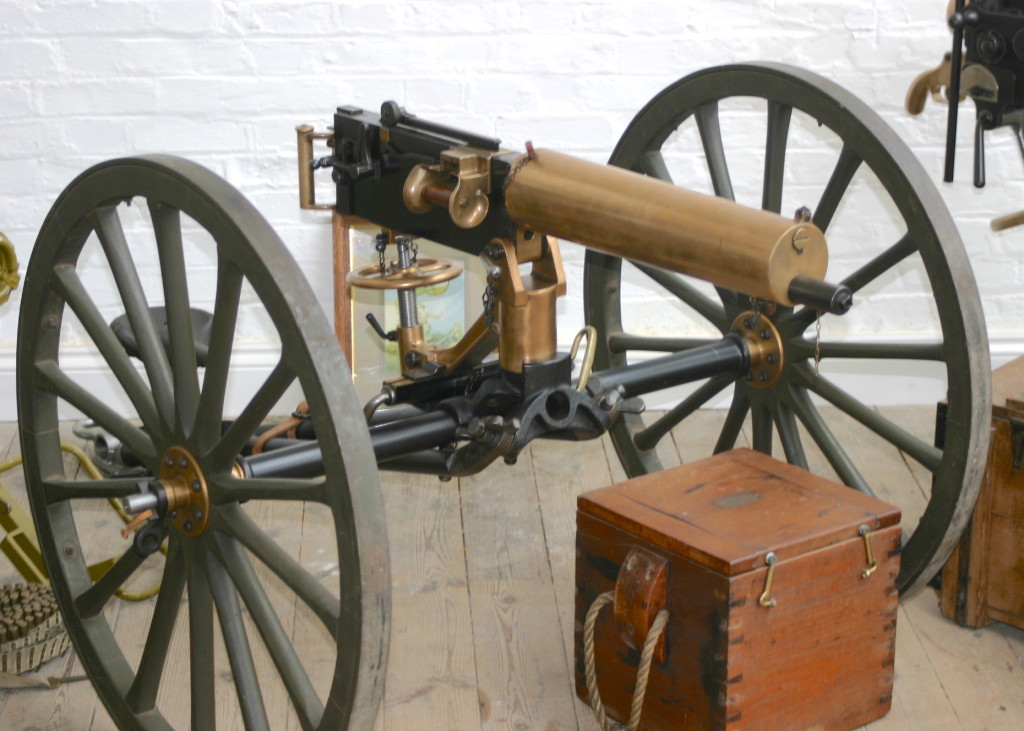
Mainly, the issue was that the smaller and lighter bullets produced less recoil, and to the working parts of the gun had to be lightened – changes like reducing barrel diameter. With this worked out, however, Maxim was in a good position to put guns into real production – in 1888 he had formally merged his company with that of Thorsten Nordenfelt. Nordenfelt had a large factory and a well-recognized name, but his manually-operated gun was becoming obsolete. The merger between the two was actually orchestrated by Basil Zaharoff, who had been sales agent for Nordenfelt but recognized the superiority of the Maxim gun.
At any rate, the new Maxim-Nordenfelt Guns and Ammunition Company began filling orders all over the world. The sales books from 1888 and 1889 include these contracts:
- Austria – 131 guns
- Imperial East Africa – 2 guns
- British War Office – 120 guns (plus additional smaller contracts)
- France – 32 guns
- British North Borneo Company – 1 gun
- British Admiralty – 5 guns
- Netherlands – 1 gun
- Congo – 3 guns
- Italy – 26 guns
- Spain – 1 gun
- Argentina – 1 gun
- Natal (South Africa) – 2 guns
- Singapore – 4 guns
The price of the guns at this time varied depending on features and accessories (they were all made to order), but was typically around £200-£300, depending on volume. In 2015 US dollars, that would be approximately $30,000-$45,000 per gun. This was not cheap hardware! These small orders were enough to keep the company afloat, especially in combination with continued production of Nordenfelt guns.
This “World Standard” gun had a number of distinctive features, the most obvious being its brilliantly polished brass water jacket – as well as a number of other brass parts. Brass was easier to cast and machine, and so for complex shapes that did not have to withstand high pressure, it made a much more appealing material than steel. For this reason, the early guns used brass for the grip assembly, feed block, water jacket, and more. As the World Standard gave way to more modern versions of the gun in later years the brass would slowly disappear piece by piece.
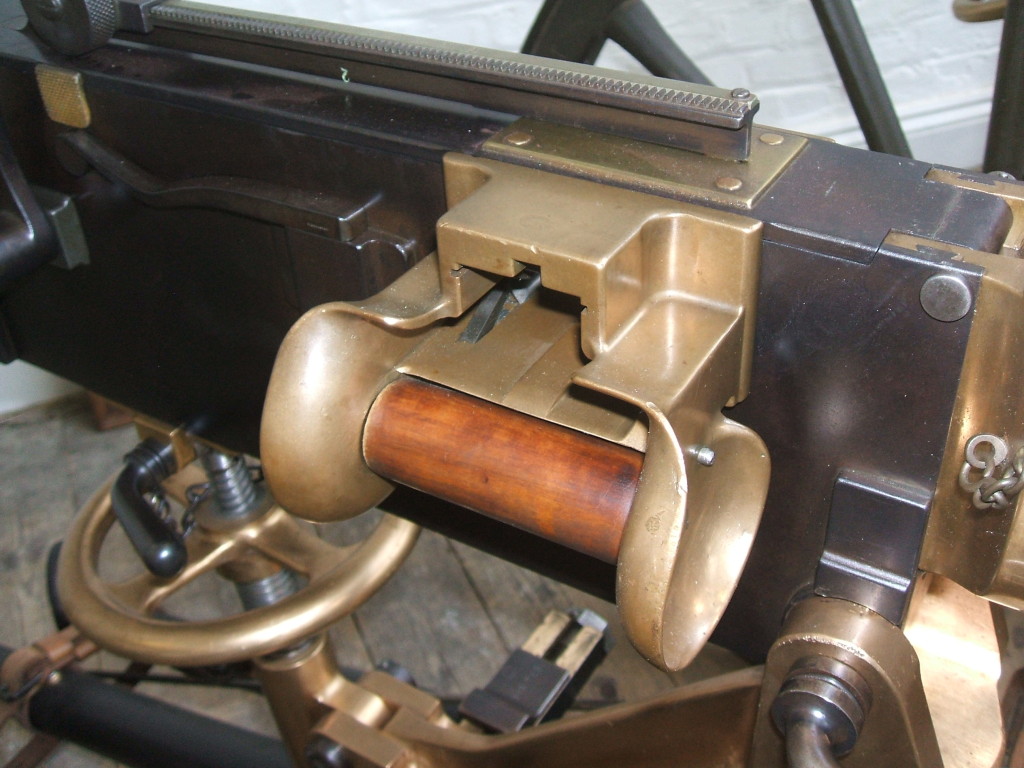
The World Standard also used a different style of crank handle than we are used to seeing today, in which two flat plates slammed together when the rearward recoil of the bolt assembly was translated into rotational movement to unlock and cycle.
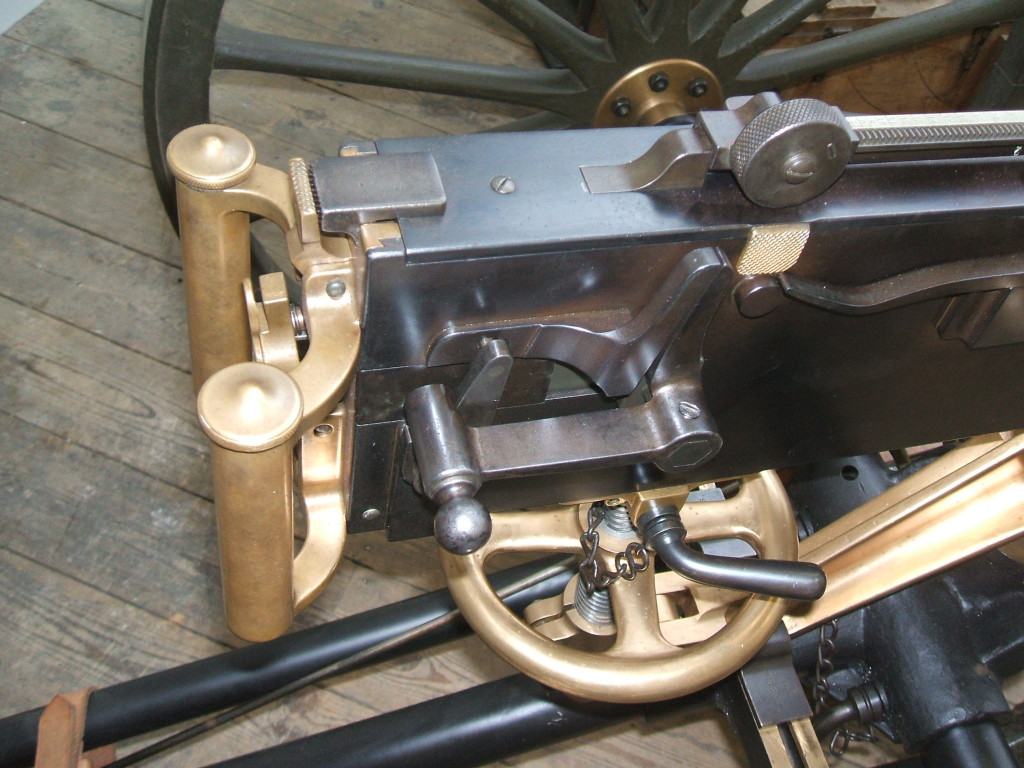
I had an opportunity to get a bunch of photos of an 1896-made example of the World Standard. Note that its wheeled mount was made by Vickers, Sons, & Maxim which dates it to 1897 or later – but it is the same pattern of carriage that was being made previously by Maxim-Nordenfelt.

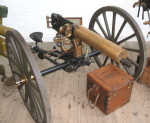
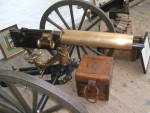
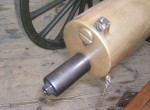
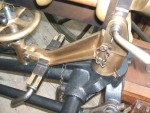
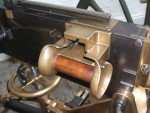
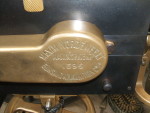
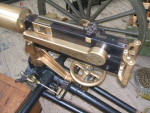
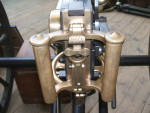
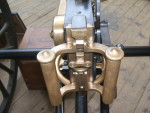
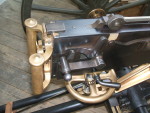

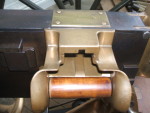


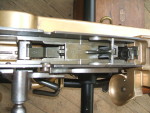


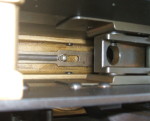
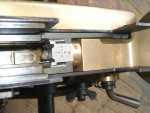
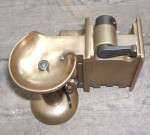
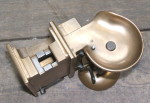
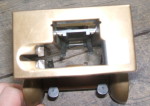

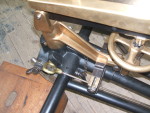
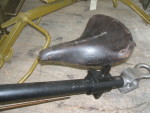
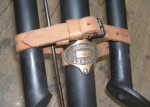
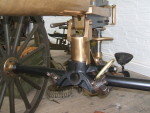
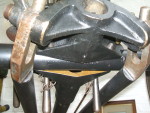
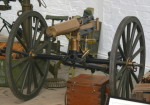
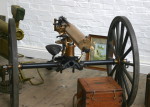
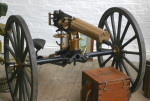
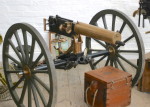
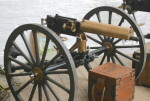
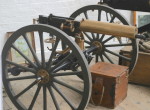
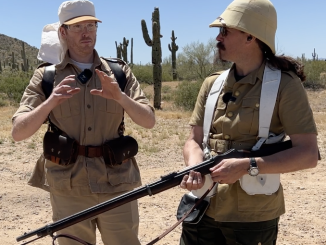
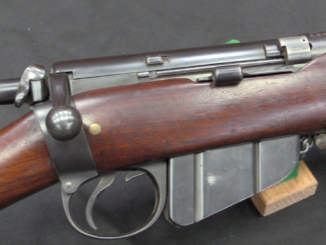
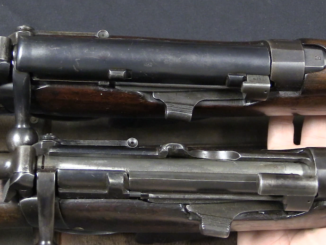
“but was typically around £200-£300, depending on volume. In 2015 US dollars, that would be approximately $30,000-$45,000 per gun.”
Do you have any info about how many £1 was worth in 1890s England, how example: how many £ got worker for month? How many £ you needed to buy bread? and when compared to other weapons: how many £ was worth Webley .455 revolver? Lee-Metford rifle? Ordnance BL 12 pounder 7 cwt field gun?
Here’s some information:
http://www.victorianweb.org/economics/wages2.html
http://www.rootsweb.ancestry.com/~irlcar2/wages.htm
http://www.census-helper.co.uk/victorian-life/
A pound was still a very large denomination of money back then, and most people would reckon in shillings and pence rather than pounds.
The average exchange rate at the time was $5 per pound sterling. So the U.S. “MSRP” of the World Standard Maxim-Nordenfelt gun would have been about $1000 to $1500 per gun.
BTW, a Colt Model P (Peacemaker) revolver sold for $22, a Winchester M1873 carbine was a $30 item, and the then-new Lee-Enfield 0.303in rifle (not an “SMLE” yet) cost the Crown 5/4/6 (five pounds, four shillings and sixpence), which at 16 shillings to the pound works out to about $26.27.
A Hotchkiss “three pounder” (47mm) breechloading “quick-firing” gun cost 250 pounds, or about $1250. So, seen as a piece of field support weaponry, the Maxim- Nordenfelt gun’s price was quite competitive by the standards of the day.
It also shows that we have a lot of inflation “hidden in the system” today. Which makes computing prices over a century ago in “modern” or “constant” currency sort of an apples-and-oranges thing.
Jeff Cooper summed it up in 1974;
“A century ago, a twenty-dollar U.S. gold piece would but you a new Colt Peacemaker revolver. Today, a twenty-dollar gold ‘double eagle’ will still buy you a brand-new Colt, but a $20 U.S. Treasury note will not.”
His point was that 1 oz. of gold, .999 fine, which was what the old $20 gold piece was, was worth about the MSRP of a Colt in both 1874 and 1974. Today, that’s still probably pretty close, assuming you’re not talking about buying one through the Custom Shop but settle for a Cimarron, Uberti/Beretta, etc.
Currency rates and vales fluctuate and can be manipulated. Values of actual merchandise tend not to change much in relation to other actual items of merchandise.
That’s the “apples and apples” comparison.
cheers
eon
20 shillings to the pound…..
One correction, the circulating gold coins in the U.S. were 90% gold, 10% copper, the same as “crown gold” of 22 karat purity (.900). Non-circulating “bullion” coins are minted in 24 karat or .999 purity since they don’t have to stand up to handling. But your point about hidden inflation is absolutely spot on.
20 shillings to the pound.
Gorgeous; art of old times. I believe that by start of WW there was lot less copper alloys on guns as they were replaced by steel.
Presumably the copper was needed for cartridge cases. As machine guns developed further they required fewer cast parts as the rifle caliber weapons needed to lose weight in order to keep up with increasingly mobile warfare. Water cooled machine guns were phased out of regular service by the Vietnam War… Or am I wrong?
I believe that the South Africans were using Vickers guns in 7.62 NATO into the early ’80s and I’m sure that some smaller armies were probably using Browning M 1917s and 1910 Russian or Chinese Maxims in a static role at the same time. They weren’t “front line” weapons but were rugged enough to function in a guard tower. Something about the brass on those old Maxims, though. Beautiful machines.
There was no shortage of copper at the time.
It’s just workability issues. Once steel could be cast, forged and machined like brass and bronze, it was far cheaper, lighter (for the same strength) and far more durable and hence replaced it.
Small correction — the $20 dollar gold piece (the legendary double eagle) was .9675 oz of .90 fine gold.
A pound actually used to mean a pound of silver.
Hence why it’s called a pound sterling.
Where may I find the mentioned sales books extracts?